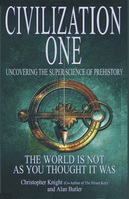Alexander Thom - A Forgotten Genius

Our original quest had nothing at all to do with Washington DC. We were trying to rescue the reputation of a man by the name of Alexander Thom. He was a Scot and was born in 1894. Thom would eventually become Professor of Engineering at Oxford University but outside of his career he had another interest. Thom was fascinated by the standing stone circles and avenues of Britain and France. He believed they had been constructed with astronomy in mind and so he set out to study and survey as many of them as he could.
For fifty patient years Alexander Thom, together with his friends and family, travelled all over Britain and to Brittany in France, carefully measuring these ancient treasures from the Stone Age and Bronze Age. He was able to prove just how carefully most of the sites had been laid out and confirm that there was an astronomical component to their creation. But Thom discovered something else. It sounded unlikely at the time but Alexander Thom became certain that most, if not all, the Megalithic monuments had been planned and laid out using the same unit of measurement. It was a unit that was 82.97 cm in length and Thom called it the Megalithic Yard.
Experts thought the Megalithic Yard must be nonsense. After all, how could such primitive people have dreamed up such a precise linear unit? And even if they had, how could they have kept it so accurate across nearly two thousand years and thousands of square miles? They said it was an impossibility but Thom wasn't interested in speculation. He was a scientist and so he kept on measuring and he kept finding the Megalithic Yard right up to his death in 1985.
It seemed to us that there must be something in the Megalithic Yard because the statistics of fifty years of work proved there was. So we set out in our first book to try and discover whether the Megalithic Yard was real, where it had come from and how it had been passed on from site to site and generation
to generation.
For fifty patient years Alexander Thom, together with his friends and family, travelled all over Britain and to Brittany in France, carefully measuring these ancient treasures from the Stone Age and Bronze Age. He was able to prove just how carefully most of the sites had been laid out and confirm that there was an astronomical component to their creation. But Thom discovered something else. It sounded unlikely at the time but Alexander Thom became certain that most, if not all, the Megalithic monuments had been planned and laid out using the same unit of measurement. It was a unit that was 82.97 cm in length and Thom called it the Megalithic Yard.
Experts thought the Megalithic Yard must be nonsense. After all, how could such primitive people have dreamed up such a precise linear unit? And even if they had, how could they have kept it so accurate across nearly two thousand years and thousands of square miles? They said it was an impossibility but Thom wasn't interested in speculation. He was a scientist and so he kept on measuring and he kept finding the Megalithic Yard right up to his death in 1985.
It seemed to us that there must be something in the Megalithic Yard because the statistics of fifty years of work proved there was. So we set out in our first book to try and discover whether the Megalithic Yard was real, where it had come from and how it had been passed on from site to site and generation
to generation.


